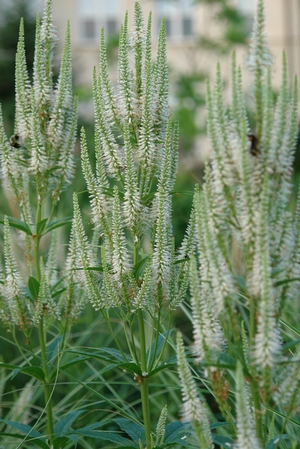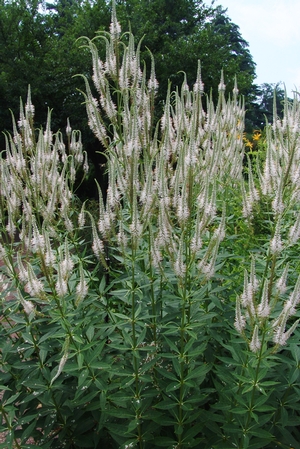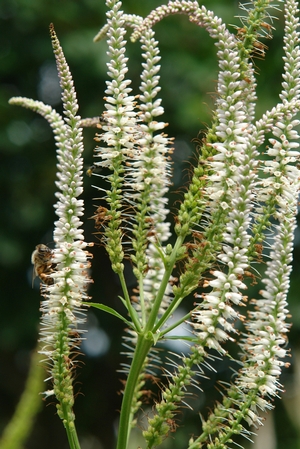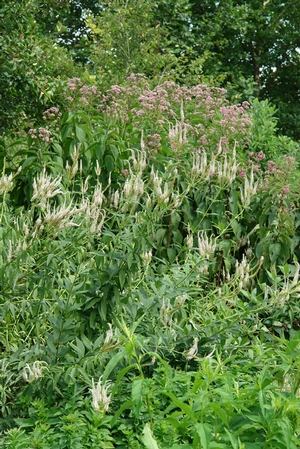Veronicastrum virginicum
Common: Culver's rootVeronicastrum virginicum LP50 - 50 per flat
- Height: 4'-6'
- Spread: 2'-4'
- Spacing: 24"
- Hardiness Zone(s): 3-10


Veronicastrum virginicum LP50 - 50 per flat



Big dramatic spikes of white Veronica-like flowers in July and August. Very tough and long-lasting once established. Found in open woods, moist meadows, and praries east of the Rockies.
Prefers moist, well-drained soils in full to partial sun. Tolerant of a variety of soils. Propagate by seed, cuttings or division in spring. Deadhead to prolong blooming season. Due to its height, Culver’s root is best used in the back of a perennial border, in a meadow, pollinator gardens, or in naturalized spaces.
Veronicastrum virginicum is a clumping, native perennial with big dramatic spikes of white flowers in July and August. With a deep taproot and rhizomes, Culver’s root is very tough and long-lasting once established. It is hefty when grown in the wild, found to be 4-7’ tall and 2-3’ wide. While it takes some time to establish, it is elegant growing amongst grasses and other perennials with its candelabra-like form and flowers that bloom from the top down for over a month.
Veronicastrum virginicum can be found in thickets and prairies from Vermont to Manitoba and south to Louisiana and Georgia. It prefers moist, well-drained soils in full to partial sun but is tolerant of a variety of soils. If a shorter height is desired, cut back of foliage in early summer to reduce the final height of the plant. Flowers can be deadheaded to extend bloom time or the plant can be cut back to the ground after bloom to receive a second flush of growth and a second bloom.
It’s pollen and nectar are collected by short and long-tongued bees as well as by a variety of wasps, flies, moths, and butterflies.